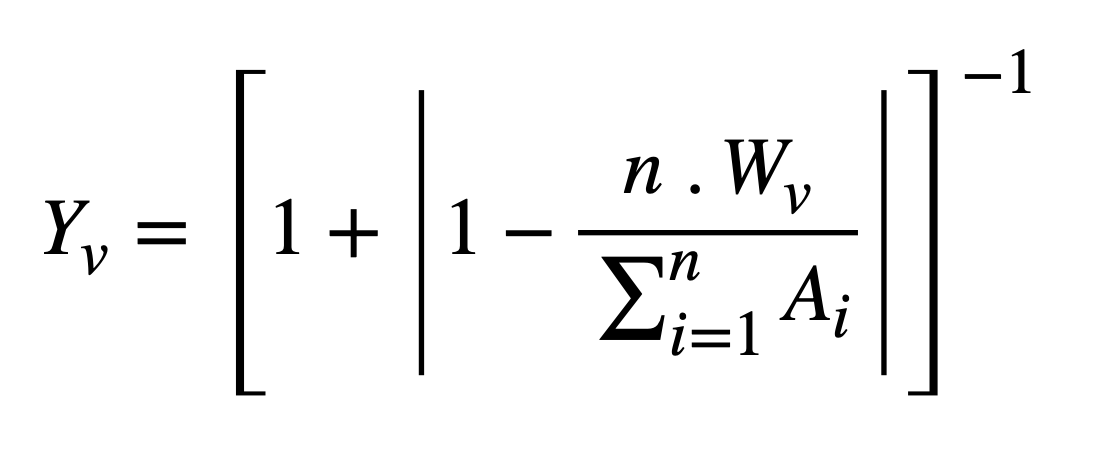
Counterpoint (Bv) expresses the degree of balance between what is seen at any given location and what can potentially be seen via movement from that location. In isovist terms, Counterpoint records how much the area that a given location ‘sees’ (the directed visibility), matches the average area visible within one visual step (co-visibility). As such it has some relation to Controllability, or the potential for any location to be visually controlled in an ‘overlooking’ manner (Turner, 2001b).
A location of high counterpoint is seen by locations that have similar sized visual fields to itself. A location of low counterpoint is seen by locations that have different sized visual fields to itself. Counterpoint therefore reveals the potential for movement to preserve or vary the size of the visual field. It is highest in entirely convex spaces, and can also reveal moments of balance and variation as an occupant moves through a threshold.
To determine counterpoint, the Isovist_App divides the value for directed visibility with the value for co-visibility. The absolute difference between the result and 1 is then used to create a normalised range of value. The outcome is a relative value that ranges from 0 to 1.
In notation form the calculation for counterpoint is expressed as:

Where ‘Ai’ is the area of any isovist that point V falls within; ‘Wv’ the directed visibility at point V; and ‘n’ the total number of isovist samples